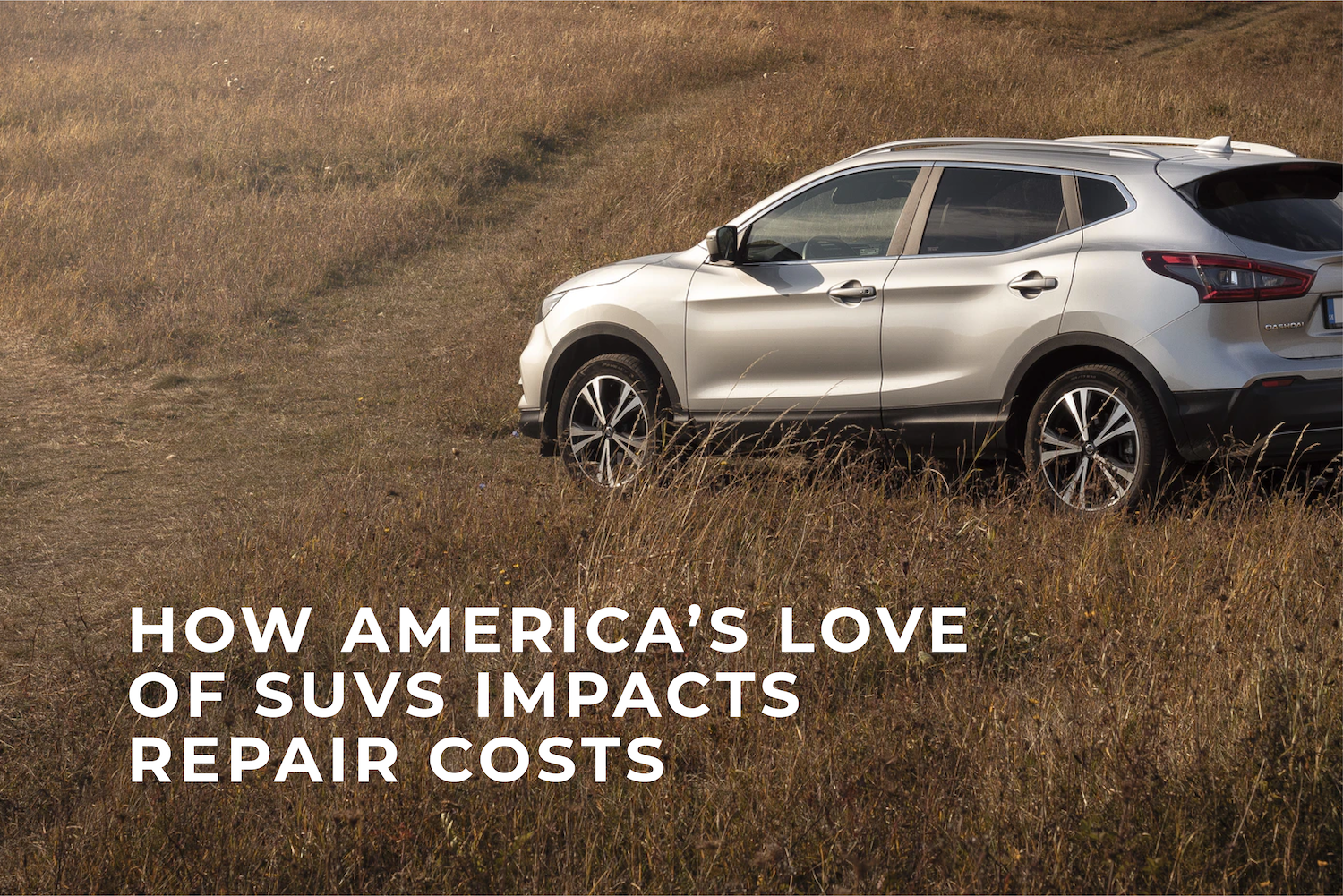How America’s Love of SUVs Impacts Repair Costs

The SUV is a truly American phenomenon. Initially, these behemoths in the 1970s that bore names like Suburban, Grand Wagoneer and Travelall were made for large families that needed towing capacity beyond the 9 passenger station wagon, or as commercial shuttles. That changed in the 1990s when Ford introduced the Explorer and the mid-size SUV was successfully positioned as a “cooler” family hauling alternative to the Minivan. Suddenly, it seemed every manufacturer was building midsize SUVs.
Collision repair costs changed as these midsize SUVs ruled the roads. The higher ride heights meant missing a passenger car’s bumper and plowing into expensive lights, plastic insert panels and sheet metal. The severity increased for the car being hit, but also for the SUVs. Built on ladder frames like the pickups they were derived from, and exempt from 2.5 mph bumper impact standards, these SUVs had more parts damaged. The rule of thumb in those days was that an SUV had a full 1.2 parts more in an estimate than one written for the average passenger car.
Increased government mileage standards put pressure on vehicle makers to create the Crossover Utility Vehicle. These vehicles shed the heavy ladder frame in favor of unibody construction and front-wheel drive. The first Crossover Utility Vehicle (GM at the time called it a “Sport Activity Vehicle”), the Pontiac Aztek, was a bizarrely styled market failure, but the formula of pairing an existing front-wheel drive unibody platform with transverse mounted engines was successful.
With that success came a new parts use trend in collision repair. Like the old body-on-frame SUVs, more parts were damaged on crossovers than in a passenger car, but only amounted to a .7 increase. This can be traced to the fact that the front bumper system in most crossovers is literally the entire front face of the vehicle. Massive (and expensive) front bumper covers that encircle headlamps are supported by many plastic honeycomb supports which tend to crack on impact.
As we look at average severity trends, it is important to look at the vehicle mix over time to see if that is a factor in the change in average repair severity. With many car makers abandoning passenger cars (like Ford Motor Company’s commitment to build only one passenger car—the Mustang), severity will continue to rise. Kia and Volkswagen have discontinued popular passenger cars as well, in favor of building more popular crossovers. So, severity in the future will be negatively influenced not because of ADAS, or exotic materials being used, but increasingly because of the type of vehicle in the accident—the crossover.

Greg Horn
Greg Horn is PartsTrader’s
Chief Innovation Officer.




